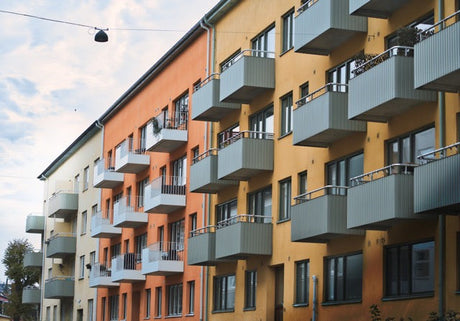New Fire Alarm Standards – What Contractors and Developers Need to Know
As of 30 April 2025, BS 5839-1:2025 is now the definitive British Standard for fire detection and alarm systems in non-domestic buildings. If you’re a contractor, M&E specialist, developer, or landlord, this isn’t just another paperwork update, it’s a critical shift in how modern buildings manage fire safety.
So, what’s new? And how can you stay one step ahead?
The 2025 revision replaces the 2017 edition, offering tighter, clearer guidance for the design, installation, commissioning and maintenance of fire alarm systems. This isn’t just theory, it’s built on real-world lessons from recent fire tragedies and backed by the latest building safety data.
The standard now gives sharper direction on everything from detector placement and system grading to manual call points and system integration. It aligns closely with Approved Document B and helps satisfy your legal obligations under the Regulatory Reform (Fire Safety) Order 2005.
What’s Actually Changed?
Here are the big shifts you need to know:
- Smoke detection in sleeping areas is now a must. Heat detectors are out. Smoke detectors are now expected in bedrooms, care home rooms, and student housing for faster alerting.
- System categories (L1–L5) have been tightened. For example, L4 now requires smoke detection at the top of lift shafts, while L2 now includes sleeping risk areas.
- Manual call points must be placed in realistically occupied areas — not dead corridors or underused spaces.
- Lockdown alarms can be integrated — but they must be distinguishable from fire alerts.
- Obstructions like beams or ductwork must now be factored into detector layouts to avoid blind spots.
- Monitoring and fault signalling must be faster. Fire alarm panels must send alerts to monitoring centres within 90 seconds and detect faults within 3 minutes.
- Red fire alarm cables are now required across the board for visibility and safety.
- False alarm notices are mandatory if the system auto-calls the Fire & Rescue Service.
- Maintenance flexibility: Six-month service intervals can now stretch from 5 to 7 months — giving FM teams more practical leeway.
- Installation quality and access are critical. Hidden interface panels (behind ceilings or locked risers) are no longer acceptable.
- And crucially: Control panels are right at the heart of this.
The Control Panel: Now More Important Than Ever
Every smoke detector, every sounder, every alarm call point connects back to one place: the fire alarm control panel. BS 5839-1:2025 sharpens expectations around the panel's performance, including:
- Proper zone plan display on-site
- Real-time integration with lift return, door release, and smoke vent systems
- Accurate clock settings for event log traceability
- Display of fault and false alarm notices
-
Battery sizing calculations updated to new criteria
If your panel can’t deliver, your entire fire system is at risk of non-compliance.
Ready to Comply? We’ve Got the Panels to Match
At Inbuild UK, we stock a selection of high-spec fire and smoke ventilation control panels that help developers and contractors meet the updated requirements of BS 5839-1:2025.
Our range includes:
- Multi-zone AOV control panels – ideal for large or complex layouts
- Battery-backed systems for full compliance with standby supply regulations
- Integrated panels that link directly to actuators, detectors and alarm interfaces
- Solutions for both new-build and retrofit projects, from residential schemes to commercial developments
All backed by industry-leading brands including Elta, BSB, Actulux and more, we offer fast shipping and expert support.



